Transcription
Chapter 5: (Strong's # 1586 - 'completion' : 'perfection')
The Celtic Peoples of Ancient Gaul
Many of the Japhetic Nations are largely missing from the biblical record, while others are so prevalent as to remove all doubt of their Indo-European, Caucasian character. Unfortunately, the nation descended from the Patriarch Gomer, son of Japheth, is one of the former. In such circumstances it becomes necessary to consult sources outside of the Biblical text to confirm the national identity of Gomer.
But first, let the scriptural text be examined: EZEKIAL 38:6 "Gomer and all its troops, Beth-Togarmah from the remotest parts of the north with all its troops and many peoples are with you." (emphasis mine).
This verse, the single prophetic reference to Gomer outside of the genealogical lists of the descendants of Japheth, is all the Scriptures mention of Gomer. The second emphasized word, Beth-Togarmah, simply means "House of Togarmah" in Hebrew, alluding to the son of Gomer, Togarmah, who also is mentioned in the Table of Nations (Genesis 10). This connection confirms that the Gomer mentioned is indeed the Patriarch son of Noah.
Yet, even in this brief reference we find that these two Nations are 'northern' nations, and, even more identifyingly, from "the remotest parts of the north". We will attempt to prove that amongst the ancient Indo-European peoples, this could refer to none other than the Celts.
The ancient Jewish historian, Josephus, in his monumental Antiquities of the Jews (1:6:1), identifies the nation of Gomer with the Galatians of Asia Minor of the 1st century A.D. 'Galatia', roughly translated means 'land of the Gauls'. Gaul was the former name of the nation known today as France (2017). At the time of Josephus, and from time immemorial before him, it was originally inhabited by a people known as the Celts. The history, both recorded and archaeological, of the Celtic presence in Gaul is indisputable.
The Celtic peoples of Asia Minor (modern day Turkey) were relative newcomers to the region. The Galatians were an offshoot of the larger Celtic world centered in Gaul and the unique circumstances of their presence in the heart of Asia Minor bears some explanation.
The Patriarchal descendants of Ham, and the nations they founded, did not cease from the wicked transgressions of their forefather upon their dispersal from Babylon. It was shown earlier how, when dividing the earth, Noah caused his children to swear on oath, cursing him who "endeavoured to seize a portion which had not been allotted to him", which Shem, Ham and Japheth all ratified (Jubilees 9:12).
Most of the Hamitic nations proceeded to their African homelands. The Hamitic nations of Canaan, however, did not. Canaan (Strongs #3667 'humiliated') and the eleven nations descended from him (see Genesis 10) seized the semitic lands of the fertile crescent. They later changed their name from 'Canaan' to 'Phoenicia'. Scripture speaks extensively of Gods desire to drive out these nations - The Sidonians, Jebusites, Amorites, Girgashites, Hivites, Arkites, Sinites, Arvadites, Zemanites and Hamathites and restore the land to its rightful ownership of the Semitic nation of Israel. The Canaanites were transgressors and occupiers, and, as such, God commanded Israel to drive them out completely and purge them from the land. Numbers 33:50-56; Joshua 3:10 ; et al)
(Most of the Phoenician nations, especially the Sidonians, were eventually repatriated back to Africa through Phoenician colonies around N Africa. The city of Carthage itself, which would later form the core of the mighty Carthaginian Empire that battled Rome, was originally a Phoenician colony founded by a Sidonian Princess).
The wicked line of Ham, however, even after the post-diluvian transgressions and the dispersion from Babylon, did not limit their aggressions to invading Semitic lands. They also penetrated into Japhetic territory, again attempting to subdue and enslave the sons of Japheth.
The Hittite Empire, lasting from around 1850 B.C. - 1200 B.C. was centered in the Japhetic lands of Asia Minor (modern day Turkey). Their capital was Hatusha, near the modern day capital of Ankara in Turkey. They were a Hamitic (black) nation descended from the Biblical 'Heth', son of Canaan, son of Ham (Gen 10), "Heth" (Strongs #2845) means 'terror' or 'prostrate' in Hebrew as they were fearsome fighters whom even King David would sometimes utilize as mercenary (cf 2 Samuel 11:3-24).
The Hittites were a wicked people constantly at war with their neighbours around them and peoples as far away as Egypt. God later promised to drive them out with a pestilence (Exodus 23:28). They were so cursed and hateful to God that he absolutely forbade the Holy nation of Israel to mix with them in intermarriage and, later on, would order the wholesale genocidal destruction of them. (Deut 7:16; 20:17). Around 1200 B.C., after having been exhausted through constant warfare, the Hittite Empire was overthrown and came to an end.
The territory of Asia Minor then became a point of contention between various warring empires, the Assyrians, the Greeks, and the Medio-Persians among them. In 480 B.C. Xerxes, king of their Medio-Persian Empire, subdued the region on his way to enslave the Hellenic (Javan) nations of Greece and incorporate them in to his expanding empire. After sustaining heavy losses exterminating a 300 man Spartan vanguard at the Battle of Thermopylae in 480 B.C., Xerxes was soundly defeated at the battle of Platea in 479 B.C. by Greek infantry and in the batter of Salamis in a naval battle off the coast of Athens (see Herodotus, The Histories).
Asia Minor then became embroiled in an empirical tug-of-war as the Greeks and the Persians vied with each other for dominance. Around the later half of the 4th century B.C., the Greek King - Alexander the Great - concluded the contest by conquering the entire Middle East and subsequently destroying the Persian Empire (331 B.C.) (see Xenophon, Hellenika, Arrian, Alexander)(Daniel 8:3-3 8:20-21).
The Hellenic Empire that Alexander founded was short lived. After his death at age 32, his empire fractured and was divided amongst four of his generals (Ptolemy, Antipater, Antigonus and Seleucios), who, in turn, began to quarrel and war amongst themselves. The Celt had been known to the Greeks for some time, indeed, since antiquity, and were occasionally involved in Hellenic affairs. Thucydides, the 4th century B.C. historian, in his Peloponnesian Wars mentions a contingent of warriors known as 'Celts' being sent to Sicily to aid the Spartan forces against Athens. The 1st century B.C. historian Arrian, in Alexander recounts that while Alexander was campaigning in Bulgaria, around 335 B.C., a delegation of Celts was received by Alexander who expressed an absolute fearlessness of his forces. In fact, when questioned by Alexander what they thought of him and his army, the delegates claimed to be "more afraid of the sky falling upon them" than they were of Alexander the Great.
A century after the death of Alexander and the fracturing of the Hellenic Empire, 3 of these Celtic tribes from central Gaul would descend upon Macedonia and on in to Greece, sacking the Greeks most sacred shrine at Delphi before proceeding on in to Asia Minor.
One tribe of the "Galatae" (or Gauls) known as the 'Teutosages' remained around Delphi until they were defeated and dislodged by the Greeks, but they, surviving, later regouped and joined the other two Celtic tribes in northern Phrygia of Asia Minor (Turkey). They there entrenched themselves in to a Celtic stronghold and formed a Celtic state in the region that they named 'Galatia'. It was these "Galatians" whom Josephus had identified as the Biblical nation of Gomer. They were not native to the region and had a language and culture unlike any of the nations that surrounded them.
St Jerome was one of the four pillars of the Latin church of Christendom in Western Europe. He was eminently renowned for his learning and command of languages, and was responsible for translating the Greek and Hebrew scriptures in to the Latin of his day and forming the Latin Vulgate bible still in use in most parts of the Catholic world. He was born in the Balkan Peninsula in the Roman province of Dalmatia around the middle of the 4th century and died in Palestine around 420 A.D. He was a widely travelled man and an even more widely read scholar. And he, too, was aware of the connection between the Galatians and the wider Celtic peoples of Central Europe.
In his preface to the 2nd Book of Commentaries on the New Testament epistle to the Galatians, St Jerome voices these observations. He also quotes an earlier authority - Caecilius Firmicianus (AKA 'Lanctantius' 240 - 320 A.D.) as sating that the Galatians were from antiquity one in body with the Gauls (located in modern day France). He quotes Lanctantius as saying that the Galatians migrated from Gaul in to the province of Galatia that they then inhabited in his very lifetime. He also, in turn, quotes the famous Roman poet Virgil in the epic 'The Aeneid' (Bk 8m VV 660-661) that identifies them in this regard as well. As noted above, the very name 'Galatians' means, roughly translated, "Land of the Gauls" in Greek.
St Jerome, in other writings, notes the distinction of the Galatian language from the nations that surrounded them. He also remarked that their dialect had similarities to those spoken in the far northern regions of modern day Italy, that he, in his travels, would have inevitably passed through and spent time dwelling in. This region would have marked the southern perimeter of the larger Celtic world. Other writers, more recently, have remarked on the similarities and common origins of Celtic languages such as Irish Gaelic and the ancient language of the Galatians.
For these reasons, among others, the identification of the Jewish historian, chief priest and General connecting the Biblical nation of Gomer with the Galatians should be indicative of Gomers association with the wider Celtic world as a whole. Josephus' confirmation of the Celtic identity of Gomer with Galatia is probably due to the fact that he, as a Jew, would have dwelled most of his life in the Roman provinces of Judea and Gallilee, and would inevitably have had more contacts with these Celtic people than with those of Gaul or the British Isles at the far flung outposts of the Roman Empire.
The biblical nation of Gomer is identical with the Celtic mother nation centered in ancient Gaul. The presence of the Celts in this region is well documented by both historians and archaeologists alike. Though the original Celtic homeland was located near the headwaters of the Rhine, Rhone and Danube rivers of Western Europe, they were a widely decentralised people that according to Hecataeus of Miletus (540 - 475 B.C.) (whose work only survives through the quotations of other writers) originally ranged over the entire regions of Europe encompassing the modern day nation-states of Portugal, Spain, France, Switzerland, the Netherlands, Belgium and the British Isles.
Herodotus of Helicarnesus (480 - 425 B.C.), who was described by the Roman statesman Cicero as the 'Father of History', in his work The Histories, says that a Greek merchant Colceus was trading off the African coast around 630 B.C. when he was driven off course near Tartessos, Spain. He found a tribe of the 'Keltoi' exploiting the silver mines of the area. Around 600 B.C., merchants from central Greece made a treaty with these same Keltoi to trade goods for their silver. The Keltoi King was named Arganthonius, which turns out, as it happens, to be the Celtic work for silver. The ancient historians Diodorus Siculus, Polybius, Strabo, Pausanias and Caesar all recognised that "Keltoi/Celtae" was equivalent to 'Galli' and 'Galatae'. Julius Caesar explicitly makes clear in De Bellum Gallo that the 'Galli' of his time called themselves 'Celtae'.
Unfortunately for us, the Celtic peoples had no written language. Their historians and religious leaders, known as the Druids, passed on their teachings by word of mouth, through stories, songs and poetry. These Druids were forbidden to commit this knowledge to writing under pain of death. It wasn't until after the power of the Druids was broken that Celtic languages began to be recorded and preserved for posterity through writing. But in semi-ancient times, the Celtic literature that did survive, mainly from Ireland and Wales, is amongst the oldest Indo-European literature extent, after Sanskrit, Greek and Latin.
Archaeologists, however, have been able to confirm that the Celts engaged in a massive expansion across Western Europe during the first millennium B.C. By the 6th century B.C., their invasion and control of the modern regions of France, Spain, Austria and the Czech Republic was complete. On the eastern flank of the Celtic world, archaeologists came upon a distinctly different ethnic group, known to historians as the 'Teutones', or Germanic peoples.
The Teutonic peoples were originally centered east of the Elbe River until as late as the first century B.C., at which time they began to move west and encroach in to Celtic lands. The difference between the Celtic and Germanic religions, languages and social structures were so distinct as to merit the acknowledgement of separate cultural identities by archaeologists and anthropologists alike. Yet the numerous parallels between the Celts and other Indo-European peoples, such as these very Germanic peoples, and also the Latins and the Aryans, can be discerned in cults, mythologies, art and racial characteristics. Even the existence of a large common vocabulary are all things that linguistics scholars reasonably have concluded must have been derived from a common ancestral source. Another similarity is that of these nations religious cults. Dion Chrysostum (1st cent. A.D.), who was highly respectful of the Celtic Druids, compared them extensively with the Aryan Brahmins of the Hindu religion.
The numerous parallels between the Celtic peoples of Western Europe and the Aryans of northern India show them to be but members of a far flung family descended from a common patriarchal source. That patriarch is the biblical Japheth. The fact that the Celts and the Aryans represent the polar peripheries of this far flung heritage accounts for the fact that they were able to preserve such characteristics largely uncontaminated from admixtures with intermediate cultures. Both survived the fracturing and splintering of the parent Japhetic culture from which they originated. The biblical account of Japheth and the dispersal from Babylon gives an adequate explanation for this.
Other posts by this author
|
2018 feb 12

|
2017 dec 21

|
2017 sep 2
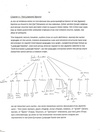
|
2017 aug 20
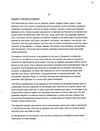
|
2017 jul 23
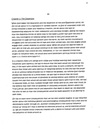
|
2017 jul 13

|
More... |

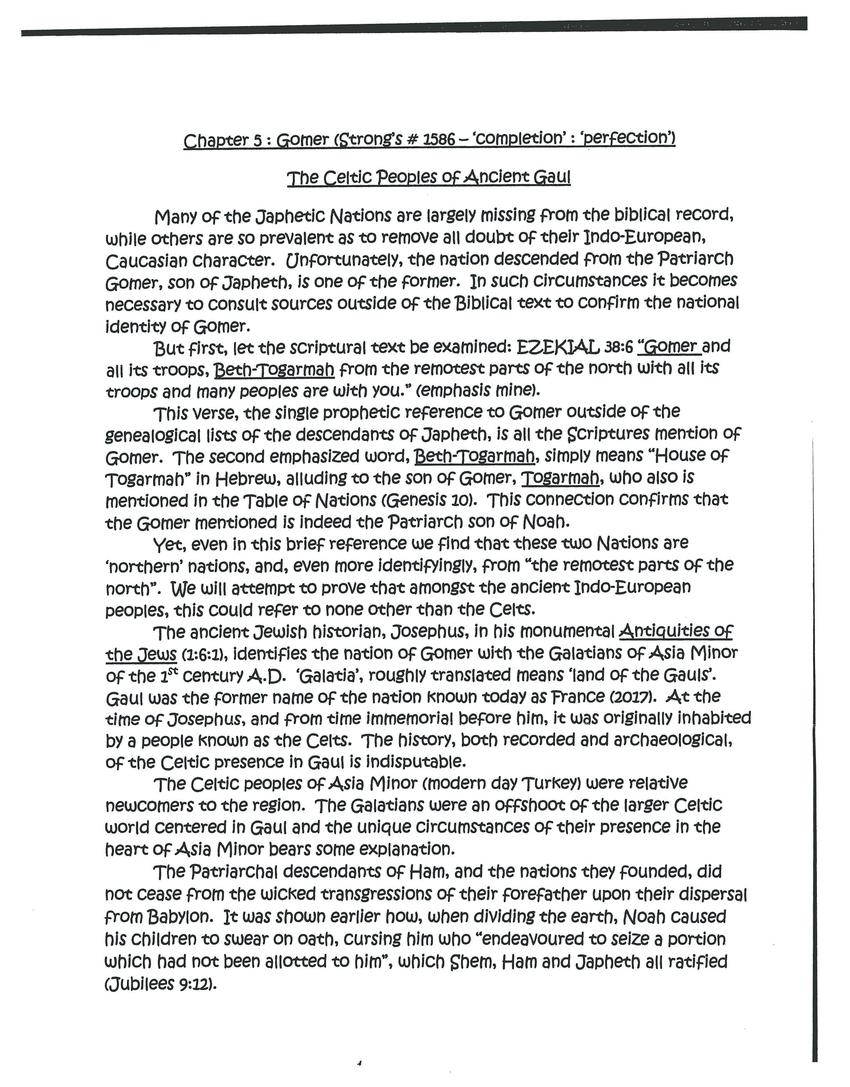

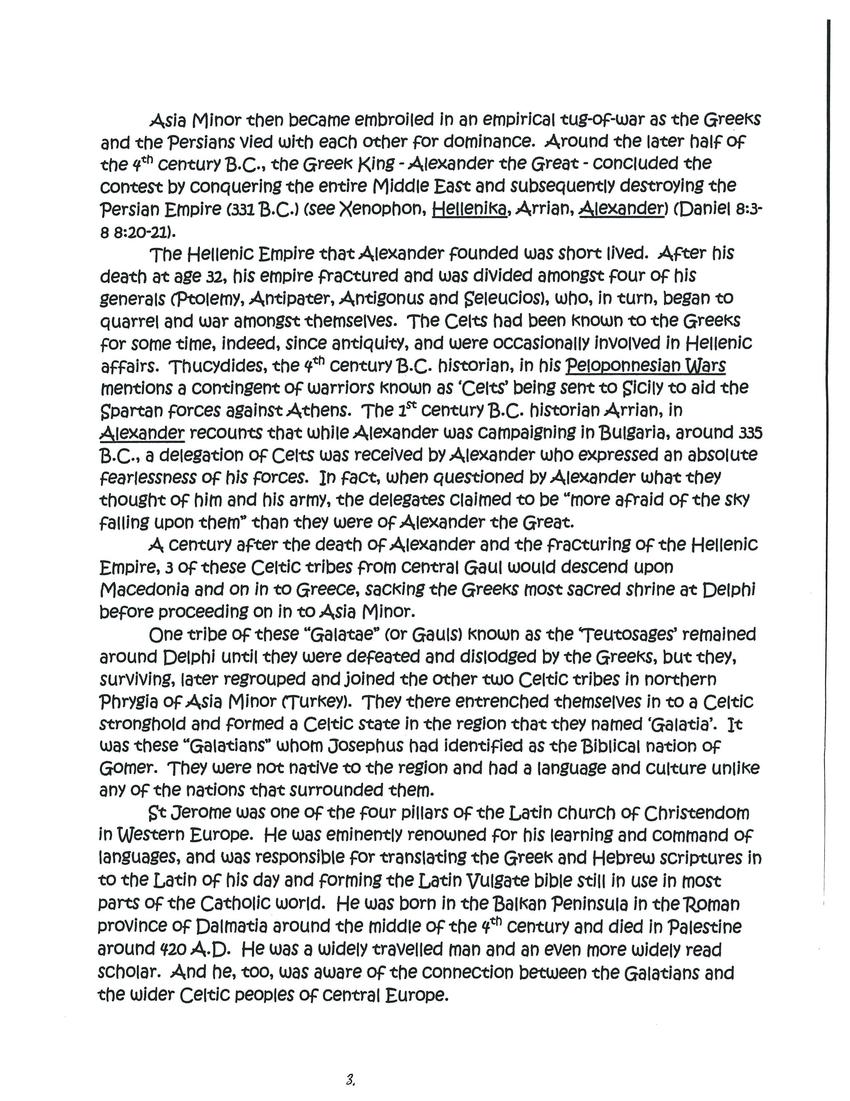
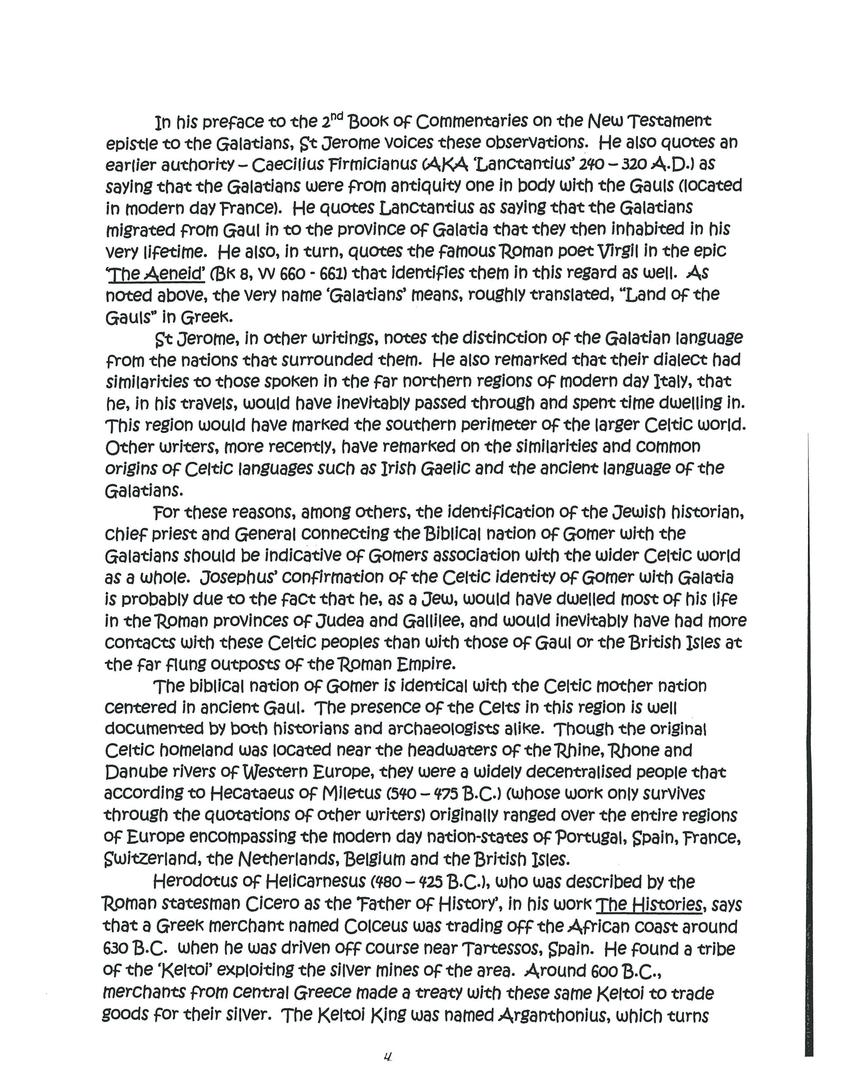
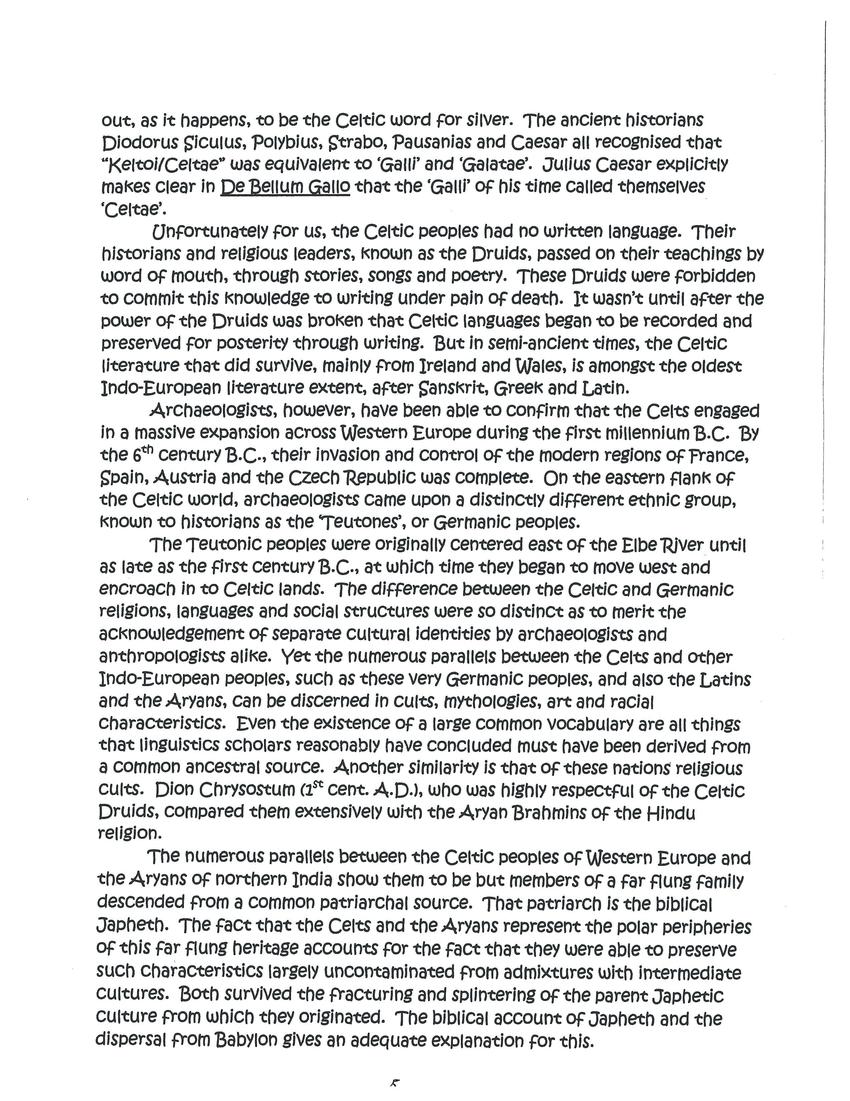
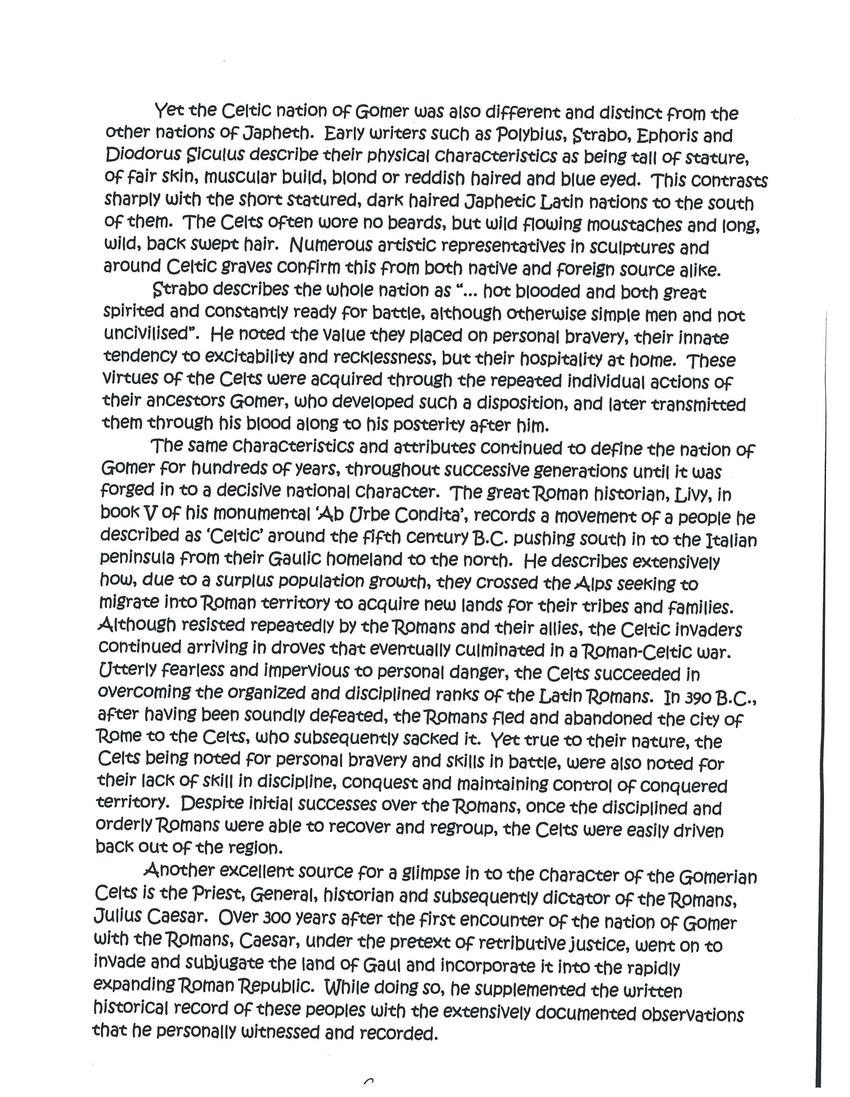
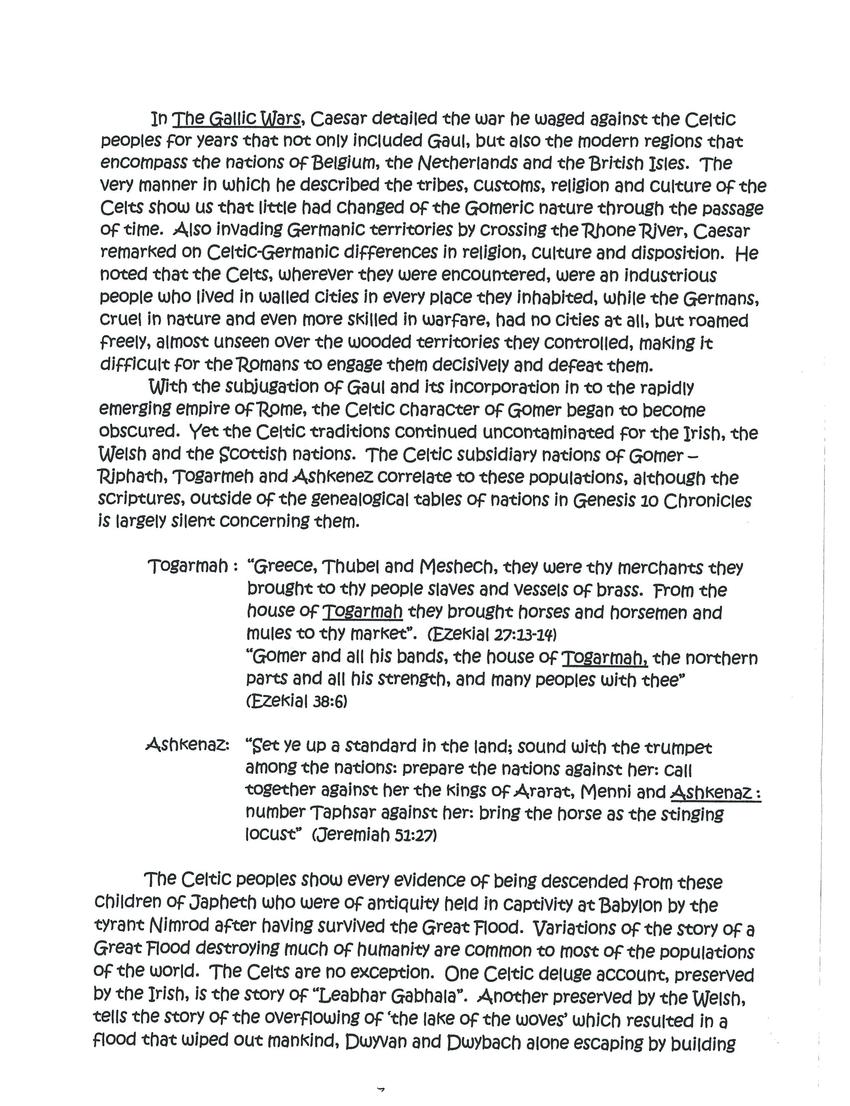


Replies